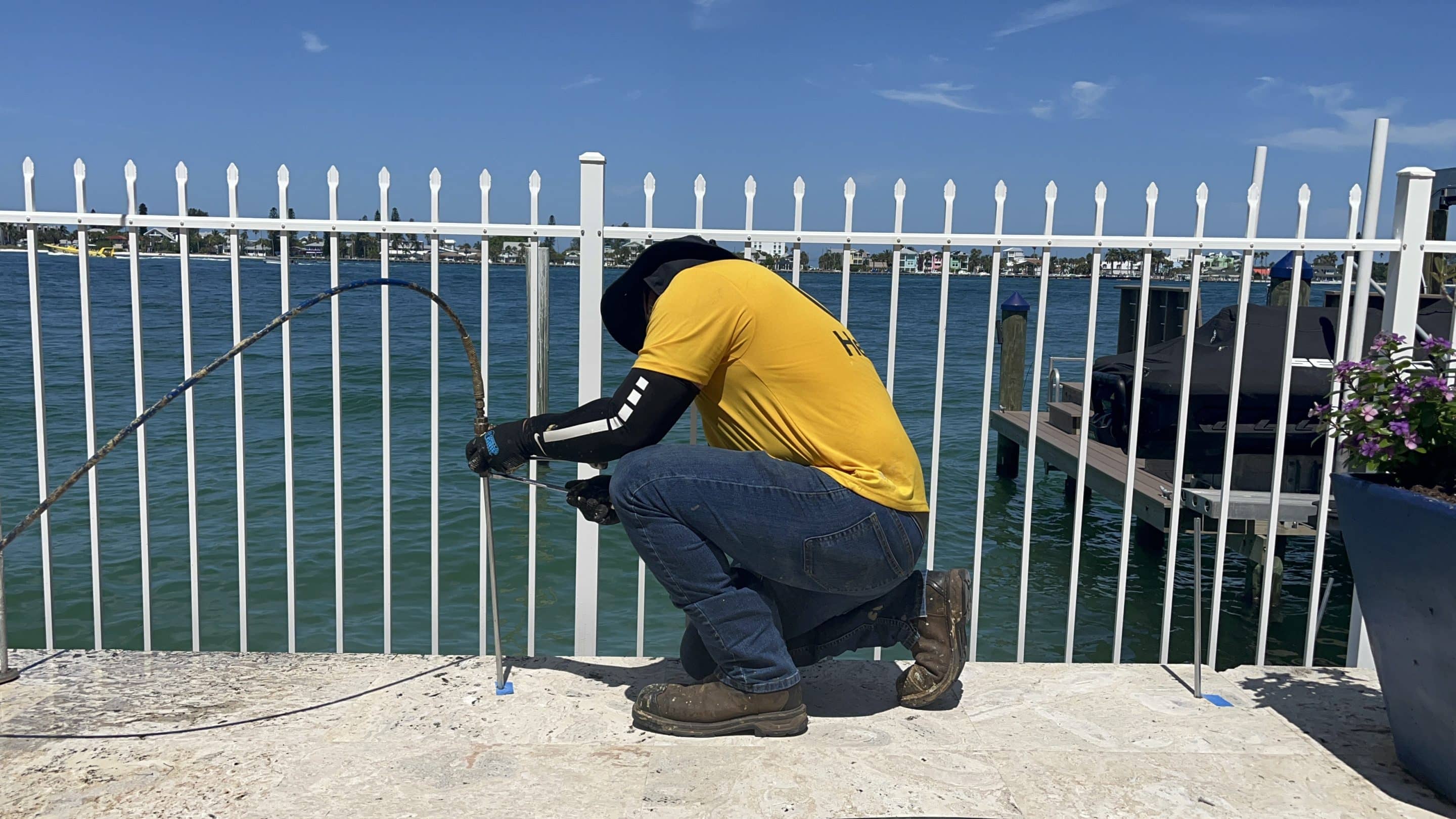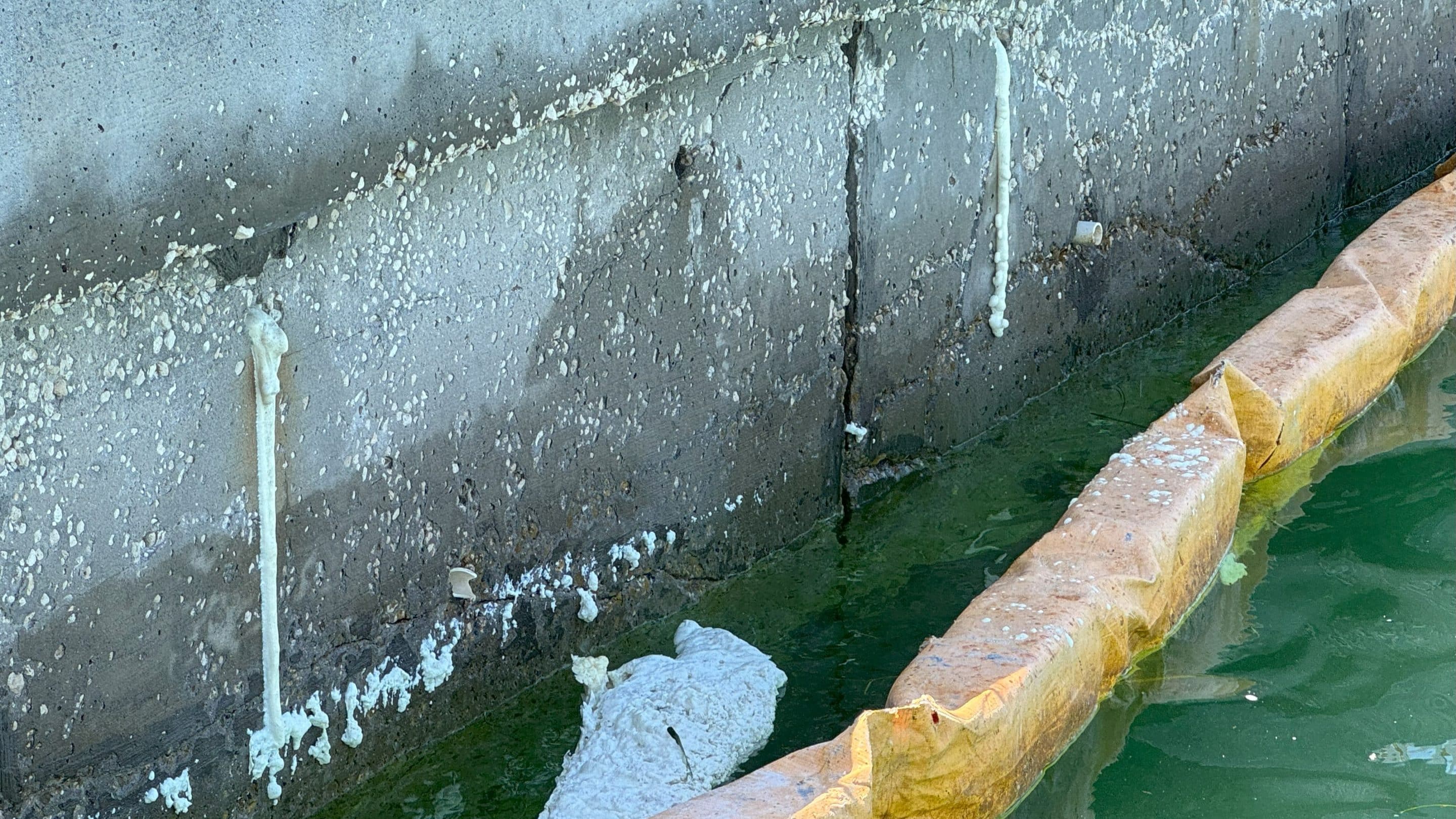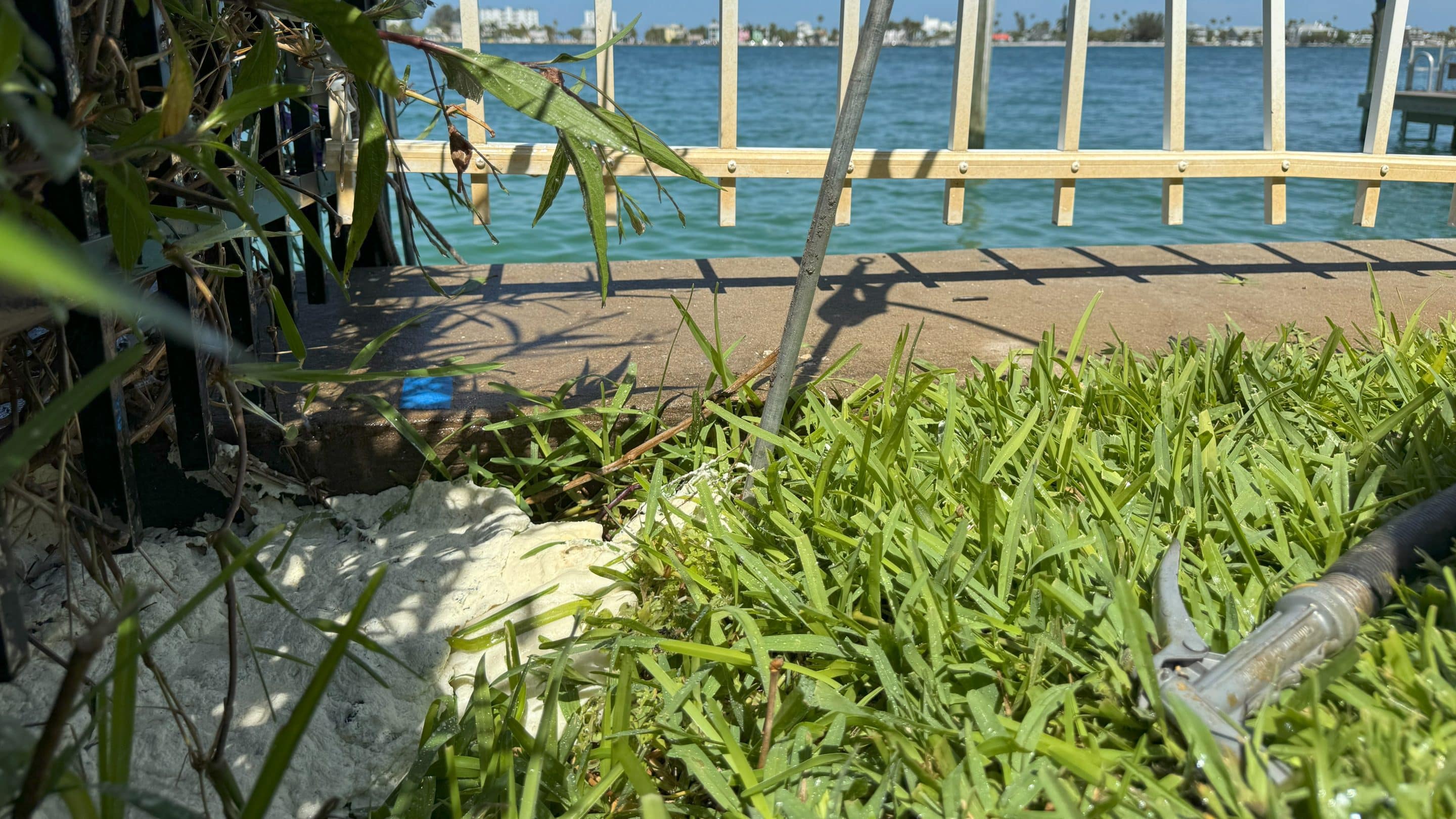St. Petersburg, FL
Solution: Soil Stabilization
Services: Chemical Grout
The Project
This case study examines a waterfront property in St. Petersburg, Florida, that experienced significant soil erosion and void formation behind its seawall. The city’s waterfront properties are susceptible to various geotechnical challenges, including soil erosion, due to factors such as tidal fluctuations, wave action, and storm surges. Over time, the soil behind seawalls can erode, creating voids that compromise the structural integrity of the seawall and the property itself.
The Challenge
The homeowner observed signs of settlement and instability in their backyard and around the pool area. This included cracks in the pool deck, sinking pavers, and cracks in the concrete. Upon further investigation, it was discovered that significant soil erosion and voids had developed behind the seawall. It was estimated that these voids extended approximately 10 to 15 feet behind the seawall and were several feet deep in some areas. These voids were causing the seawall to lose support, leading to the observed settlement issues. The erosion was likely caused by a combination of factors, including the age of the seawall, the type of soil, wave action, and water intrusion.
The Solution
After careful inspection, Helicon was hired to address the soil erosion and void formation; chemical grouting was employed. Chemical grouting involves injecting a specialized expanding polyurethane resin into the voids behind the seawall. This resin expands and fills the voids, compacting the surrounding soil and providing structural support to the seawall. Chemical grouting was selected for this project because it offered a minimally invasive solution that could address the void formation without the need for extensive excavation or disturbing the pool deck.
The chemical grout system utilized consisted of a resin and a hardener that, in this case, were pre-mixed in a truck before being pumped into the soil through small injection ports. As the mixture reacts, it expands and fills the voids, creating a dense and stable mass. The properties of the polyurethane grout contribute to its effectiveness in this application. It has a high density, providing substantial weight to counteract soil pressure, high compressive strength to withstand the load of the soil and the seawall, and low permeability to prevent water from infiltrating and causing further erosion. The expansion pressure of the grout compacts the surrounding soil, further enhancing stability.
Jet filters were also installed in the sewall. Jet filters are a more advanced type of drainage system than traditional weepholes. Jet filters incorporate a filter that prevents debris from clogging the opening. They function by providing a drainage path for water trapped behind the structure, relieving hydrostatic pressure, and preventing the loss of soil and backfill material.
This case study highlights the importance of understanding the causes and consequences of soil erosion in coastal environments. By utilizing appropriate techniques like chemical grouting and implementing preventative measures, waterfront property owners can protect their investments and ensure the long-term stability of their shorelines.
FREE INSPECTION REQUEST





